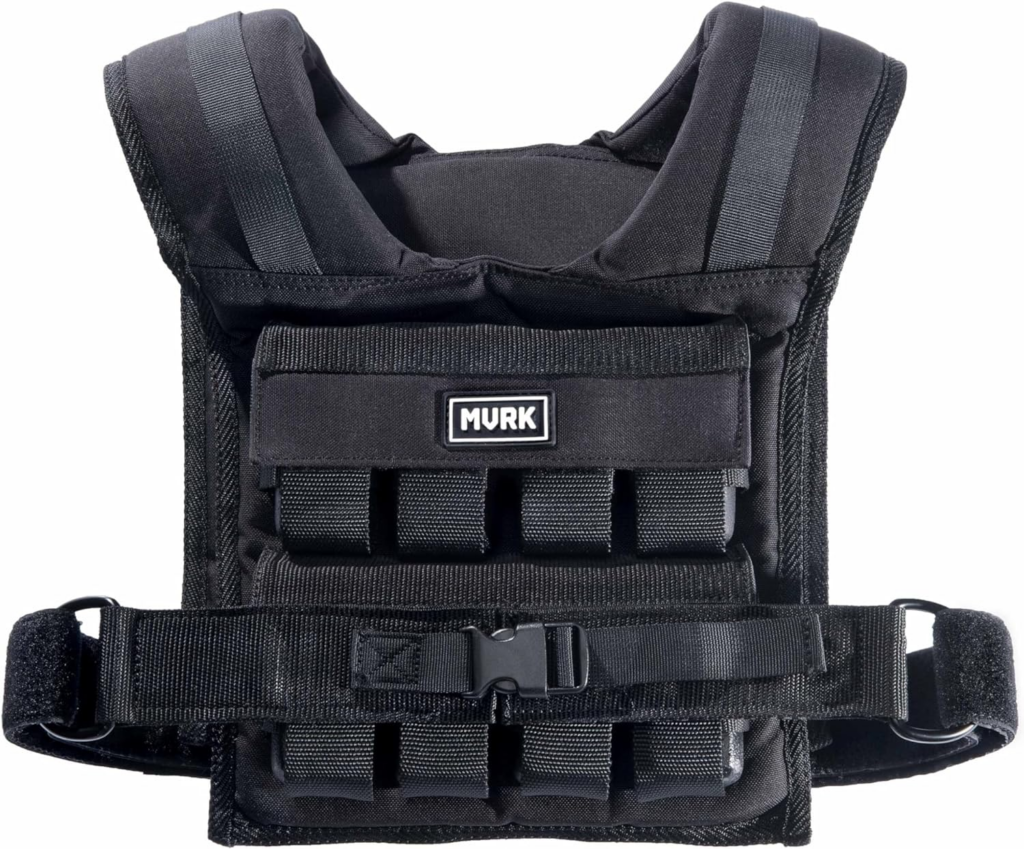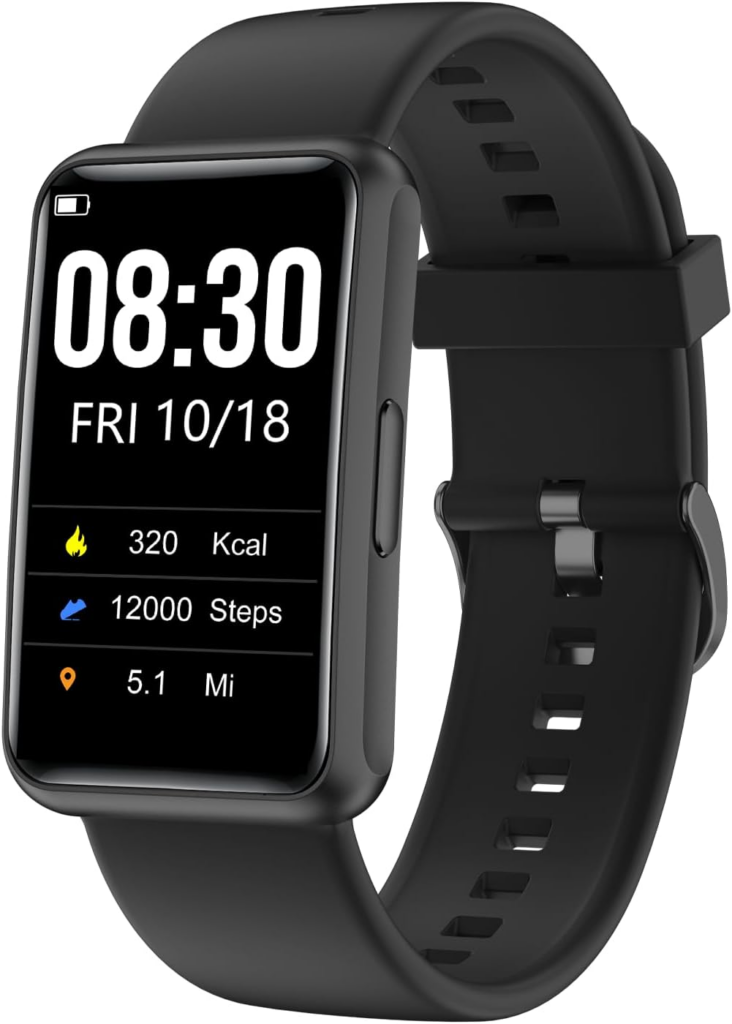Finding it hard to shed those extra pounds? Walking is a simple, yet powerful tool for weight loss. This blog will guide you through effective walking strategies that can help you burn fat with ease.

Potential Health Benefits of Walking
Walking regularly can slash your risk of heart disease and diabetes, help shed pounds, and improve your overall health.
Reducing the risk of preventable conditions
Regular physical activity like a consistent walking routine significantly cuts the chances of developing heart disease, and helps keep obesity at bay. By engaging in just 50 to 70 minutes of brisk walking three times a week, you can start seeing changes in your body composition, such as loss of body fat and inches off your waistline.
This kind of aerobic workout improves cardiovascular health and serves as an excellent form of exercise for those aiming to achieve preventive health measures.
Building a habit of daily walks ensures that your body is consistently burning calories, which assists in maintaining a healthy weight and reducing excess body fat. This commitment to regular movement not only wards off conditions related to sedentary lifestyles but also fosters overall well-being.
Engaging in this simple yet effective physical activity provides immense health benefits without the need for specialized equipment or gyms.
Weight loss
Walking is a powerful ally in the fight against unwanted pounds. Not only does it tone your body, but it also burns calories without the strain of high-impact exercises. As you step out for a walk, every stride contributes to reducing body fat and trimming waist circumference, especially if you keep up with a consistent routine.
An impressive study revealed that obese women who dedicated themselves to walking 50-70 minutes three times weekly shed an average of 1.5% body fat along with more than an inch off their waists over 12 weeks.
By setting goals like reaching at least 10,000 steps each day—about five miles—you’re taking control of your weight loss journey one step at a time. This achievable target not only aids in shedding belly fat but also in promoting overall health benefits that can last a lifetime.
Increase your calorie burn by incorporating uphill walks into your regimen several days per week; this boosts the intensity of physical activity while still enjoying all the advantages walking has to offer.
How Walking Contributes to Weight Loss
Walking serves as a simple yet effective method for shedding pounds, primarily by burning calories at a steady rate. The pace of your walk has a direct impact on the calorie burn; brisk walks can significantly increase that number.
Adding resistance, such as wearing a weighted vest or walking uphill, engages more muscles and ups the caloric expenditure even further. Prioritize maintaining good form—stand tall, shoulders back—to ensure maximum efficiency of movement and to prevent injury.
Incorporating bouts of resistance training during your walks can help build muscle which boosts metabolism in the long run. Try power walking in short bursts to enter the fat-burning zone more quickly.
If you’re pressed for time, opting for several shorter walks throughout the day can be just as beneficial—and sometimes more manageable—than one long trek.
Lastly, setting daily step goals like reaching 10,000 steps helps create accountability and provides clear targets that contribute to consistent weight loss efforts over time.
Walking pace and calorie burn
Picking up the pace during your walks is like hitting a turbo button for calorie burning. The faster you go, the more calories you torch; it’s as simple as that. For those looking to shed extra weight, this means revving up your walking speed can directly contribute to weight loss goals.
Imagine just by increasing your stride, obese women have seen significant changes, such as a 1.5% drop in body fat and over an inch off their waists with regular brisk walks.
The great news doesn’t stop there; slipping on a weighted vest can crank up the intensity even more. By adding this extra load while maintaining a moderate speed of 2.5 mph on flat ground, walkers have boosted their calorie burn by an impressive 12%.
That means every step taken not only strengthens muscles but also ignites a higher level of fat burn without having to sprint or run – perfect for those who prefer keeping both feet closer to the ground!
Using a weighted vest
Adding a weighted vest to your walking routine can turn a simple stroll into a more challenging workout. Carrying extra weight increases the intensity of physical activity, which helps in boosting the metabolic rate and calorie expenditure.
People often overlook this exercise equipment, but it’s an effective tool for enhancing cardiovascular health while also promoting fat burning.
Studies show that wearing these vests during walks can lead to burning up to 12% more calories than going without one. This means you’re getting more out of each step, making your efforts towards walking for weight loss even more productive.
It turns your walk into a form of resistance training, which not only strengthens muscles but also pushes your aerobic exercise efforts further without needing additional time or distance covered.
Walking uphill
Walking uphill adds a new challenge to your regular walking routine and increases the amount of calories you burn. The steeper the incline, the more effort it takes for your body to climb, effectively turning a simple walk into a powerhouse workout for your legs and glutes.
As you ascend hills or trek up mountains, not only are you burning more calories, but you’re also building muscle strength in areas that flat-surface walking doesn’t target as intensively.
Incorporating hill walking into your exercise regimen can dramatically boost weight loss efforts. By tackling inclines two to three times per week, whether outdoors on natural terrain or on an inclined treadmill at the gym, you create high-intensity intervals within your walks.
This variation not only helps in shedding extra pounds but also breaks the monotony of level-ground ambulation. Engaging with nature by climbing hills or engaging in steep walking offers additional motivational boosts while ensuring that each step taken contributes significantly towards achieving weight loss goals.
Maintaining proper form and posture
Maintaining proper form and posture isn’t just about looking good while you walk. It’s a crucial part of making each step count towards your weight loss goals. Aligning your body correctly ensures that you work the right muscles, helping to build strength without risking injury.
Keep your shoulders back, chin up, and eyes forward—the great posture can actually increase walking speed and lengthen your stride. This means more calories burned on every outing.
Think of each walk as an opportunity to engage with different muscle groups in the body; this will not only improve overall strength but also heightens calorie burning for effective weight loss.
As you focus on keeping a steady pace, integrate resistance training moves like squats or lunges to boost muscle building further. With these strategies combined, you’ll be powering through walks efficiently—turning simple strides into significant steps toward shedding pounds and sculpting leaner muscles.
Incorporating resistance training
Incorporating resistance training into your walking routine turns a simple stroll into a dynamic workout that can enhance weight management and improve body composition. Adding squats, push-ups, or lunges during your walk boosts exercise intensity and builds muscle alongside cardiovascular health.
This dual approach helps ramp up your metabolic rate, meaning you’ll burn more calories even when you’re not actively exercising.
Mixing short bursts of these strength exercises with intervals of brisk walking activates different muscle groups and keeps your fitness routine fresh and challenging. Studies indicate that not only does this method increase calorie burn, but it also contributes to significant reductions in body fat and waist circumference over time, making each step count towards greater physical activity benefits.
Power walking in intervals
Power walking in intervals is a dynamic way to boost your calorie expenditure. It involves short bursts of high-intensity walking followed by periods of recovery.
- Start with brisk walking to warm up your muscles and prepare your body for the exercise. A five – minute steady pace will do the trick.
- Accelerate to an uncomfortable but sustainable pace for 10 – 15 seconds. This burst should be fast enough that you can’t easily hold a conversation.
- Slow down to your normal walking speed for about 1 – 2 minutes, allowing your heart rate to come down. Use this time to catch your breath.
- Repeat this cycle throughout your walk, alternating between power intervals and recovery periods. This technique keeps your metabolic rate high.
- Aim for at least 30 minutes of interval training, which can significantly increase the number of calories you burn during each walk.
- Keep track of your progress with a fitness tracker or app; this can help ensure you’re reaching the recommended intensity during the high-speed intervals.
- Focus on maintaining proper form during both the power intervals and rest periods. Keep your back straight, shoulders back, and head up.
- Add arm movements to engage more muscle groups and further increase calorie burn during power walking bouts.
- Aside from burning more calories, interval training can also improve cardiovascular health by pushing the heart to adapt to varying intensities.
- Gradually lengthen the duration of power intervals as you get fitter, aiming for longer periods of high-intensity walking before slowing down.
Shorter, more frequent walks
Shorter, more frequent walks can be a game changer for your weight management and health goals. They fit easily into busy schedules and support blood sugar management by breaking up long periods of inactivity.
- Splitting your walking routine into three shorter sessions each day boosts metabolism each time you move.
- Walking after meals, especially dinner, aids digestion and helps to control blood sugar levels better than one longer walk.
- Aiming for brief walks that add up to 10,000 steps ensures you meet the recommended daily physical activity level for health benefits.
- Frequent walks keep your energy levels stable throughout the day rather than experiencing a mid – afternoon slump.
- Regular short strolls can reduce cravings and impulsive snacking by keeping you engaged and away from boredom-related eating.
- Engaging in multiple walks can make exercise feel less daunting and more achievable for those new to regular physical activity.
- Short activities can improve your mood quickly, giving you frequent doses of endorphins, known as ‘happy hormones.’
- This approach encourages consistency in your fitness goals since it’s easier to find 10 or 15 minutes at a time rather than carving out an hour or more.
- Pedometer tracking becomes more motivating as you see step counts increase throughout the day with every short walk taken.
Aiming for 10,000 steps per day
Hitting the 10,000 steps mark each day is a popular goal for many looking to boost their physical activity and shed pounds. It’s roughly the equivalent of walking five miles and can significantly contribute to your weight loss efforts by burning calories and enhancing cardiovascular health.
Carrying a pedometer or using a fitness app can help you track your progress and keep you motivated.
To achieve this daily step count, mix in brisk walks throughout your day. You could walk to work, take a stroll during lunch breaks, or even pace while on phone calls. Making these simple changes adds up over time and pushes you closer to that 10,000-step target without needing to set aside large blocks of time for exercise.
Tips for Increasing Daily Steps
To ramp up your daily steps, consider strapping on a fitness tracker for motivation and accountability. Opt to climb the stairs rather than taking elevators, making this small shift an easy calorie burner throughout your day.
And if you find yourself regularly driving places, aim to park a little farther away from entrances – each extra step counts towards your goal. During work hours, get into the habit of taking walking breaks; these short spurts of activity can add up significantly over time and help break up long periods of sitting.
Using fitness trackers
Fitness trackers are changing the game for people trying to bump up their daily step count. These handy devices, ranging from basic pedometers to advanced activity trackers, make it easy to monitor how much you’re moving throughout the day.
Strap one on your wrist or clip it to your belt and watch as it counts each step towards your goal. Many users find that having a fitness tracker motivates them to take extra walks, choose stairs over elevators, and even park farther away just to get in more steps.
Setting a daily step goal is a breeze with these gadgets at your side. Health experts often suggest shooting for 10,000 steps per day—a number that’s been linked with better overall health and weight loss.
Fitness trackers not only count every step but also allow you to track progress toward that magic number. Plus, they provide insightful feedback on other aspects of physical activity which can be crucial in managing weight effectively.
By keeping an eye on your tracker throughout the day, you’ll be spurred on to move more—and those extra steps can add up to significant calorie burn and fat loss over time.
Taking the stairs and parking further away
Making a habit of climbing stairs instead of using the elevator can do wonders for your fitness routine. It’s a simple switch that engages your leg muscles more and ramps up your daily physical activity, which is crucial for health and weight management.
Each step you climb spells progress towards burning those extra calories and getting closer to your exercise goals.
Consider parking farther away from entrances at work or while running errands. This small decision not only adds valuable steps to reach the recommended 10,000-step target but also increases fat burning throughout the day.
Incorporating these walking habits into your lifestyle boosts overall activity level with minimal disruption to your routine, turning ordinary tasks into opportunities for better health.
Walking breaks at work
Sitting at a desk all day can make you feel sluggish and may harm your health. To combat this, mix walking breaks into your work routine. It’s simple: stand up every hour and take a brisk five-minute walk around the office or block.
These short strolls add up, increasing your daily step count and boosting both weight management and cardiovascular health.
Keep a pedometer handy to track your progress throughout the day. Challenge yourself to hit more steps each week. As these walks become part of your daily habit, you’ll notice an improvement in aerobic exercise benefits and might even start shedding that stubborn belly fat without hitting the gym hard.
Effectiveness of Walking for Weight Loss
Walking regularly can chip away at stubborn belly fat. Keeping a consistent pace increases the overall calorie deficit, crucial for weight loss. A brisk walk triggers the fat-burning zone, where your body opts to use fat as its primary energy source.
Over time, this consistent aerobic exercise contributes to significant reductions in body fat percentage. Moreover, walking doesn’t just burn calories during the activity itself; it also raises metabolism slightly for a period afterward, enhancing the weight-loss effect even when you’re at rest.
Incorporating walking into your lifestyle is an effective and sustainable way to manage weight and improve fitness without needing intense workouts or gym equipment.
Burning belly fat
Burning belly fat can often feel like an uphill battle, but incorporating walking into your routine offers a beacon of hope. Studies show that regular walking, especially at a brisk pace or with added resistance like a weighted vest, effectively targets and reduces stubborn abdominal fat.
Women dedicating 50-70 minutes to this physical activity three times weekly have seen significant waist circumference reductions along with overall weight loss.
To maximize the fat-burning power of your walks, consider varying your terrain by seeking out hills or adding elevation wherever possible. This not only engages more muscles but also increases calorie burn and boosts the elimination of unhealthy belly fat.
Consistent effort pays off, as increasing your daily steps consistently contributes to shrinking that waistline and promoting better health outcomes without needing overly strenuous exercises or gym memberships.
Increasing fat burn
To ramp up your fat burn, consider strapping on a weighted vest before you head out for your walk. It’s like carrying a little passenger that requires extra effort from your body to move.
This small change has big effects—it can boost calorie expenditure by a whole 12%. The heavier load pushes your muscles to work harder and in turn, cranks up the number of calories you torch while you hit those steps.
Keeping an eye on that step count is key. Strive for 10,000 steps each day; it’s not just a random number but one tied closely with weight management success. Studies have proven its worth: obese women walking this daily goal saw significant drops in body composition and waist circumference over several months without making any other changes to their lifestyles or diets.
Think about it—with every step, you’re paving the way towards slashing that belly fat and shifting towards a healthier version of yourself just by simply moving more throughout the day.
Importance of Consulting a Healthcare Professional
Making changes to your exercise routine can have a big impact on your health. That’s why it’s crucial to seek advice from a healthcare expert before starting or ramping up your walking regimen.
A medical professional can assess your overall health and help you set safe, realistic goals for weight loss and fitness. They’ll also identify any potential risks unique to you, such as pre-existing conditions that could affect how much and what type of walking is best.
Talking to a doctor about health concerns isn’t just for those with known issues; it benefits everyone. Healthcare professionals provide personalized guidance based on the latest research and their clinical experience.
This way, you ensure that every step you take contributes positively to your well-being without causing harm or leading to overexertion. Consulting with a medical professional is especially vital if you’re considering using additional accessories like weighted vests or adopting intensive training techniques such as power walking intervals.
Accessories to Use When Walking for Weight Loss
Walking for weight loss becomes more effective with the right accessories. They can enhance your effort and help track progress toward fitness goals.
- Weighted clothing: Adding weighted vests or ankle weights increases resistance, making your body work harder during a walk. This extra effort can lead to a higher calorie burn.
- Incline walking: Use an incline trainer or find hilly terrain to boost the intensity of your walks. Inclined surfaces require more energy, which helps burn more calories.
- Activity trackers: Wear a fitness tracker to monitor your steps and activity levels. These devices motivate you to hit the daily step goal and keep you accountable.
- Daily step goal: Set a specific step count goal, like the recommended 10,000 steps per day, to aim for consistent physical activity that promotes weight loss.
- Walking shoes with good support: Invest in quality walking shoes that provide proper arch support and cushioning, reducing injury risk and allowing longer walking sessions.
Sources of Information
To ensure that you’re getting reliable and accurate advice on walking for weight loss, it’s critical to check the credibility of your sources. Look for health information from trusted medical associations or websites that cite scientific research.
Peer-reviewed studies published in academic publications offer well-researched insights into the benefits of cardiovascular exercise and are excellent resources for understanding how physical activity can lead to fat burning.
Experts often share their knowledge about effective weight management strategies through scholarly articles. This is where cutting-edge research findings become accessible, giving you the opportunity to learn about the latest discoveries related to walking as a form of exercise.
Always make sure the data comes from reputable organizations dedicated to advancing health sciences and public knowledge on staying fit and healthy.
Conclusion for Walking Weight Loss Tips
Walking for weight loss is a straightforward and effective approach to shedding unwanted pounds. By lacing up your shoes and stepping out the door, you’re on your way to burning calories and improving your health.
Remember, every step counts towards reaching your fitness goals. Keep it consistent, enjoy the fresh air, and let each stride take you closer to a healthier you. Make walking a part of your daily routine and watch as it transforms not just your body but also your well-being!
Research – Facts and Info about Walking for Weightloss
General Facts
1. Walking can help reduce the risk of preventable conditions such as heart disease and obesity.
2. Obese females who walked for 50-70 minutes 3 days per week for 12 weeks lost an average of 1.5% body fat and 1.1 inches around their waists.
3. Increasing walking pace can help burn more calories and contribute to weight loss.
4. Wearing a weighted vest while walking can increase calorie burn.
5. Walking uphill can help increase calorie burn and is recommended two to three times a week.
6. Proper form and posture while walking is important to increase walking speed and lengthen stride, as well as to prevent injury.
7. Resistance training intervals during walks can help increase calorie burn and build new muscle.
8. Power walking in intervals can increase calorie burn.
9. Doing three shorter walks a day, particularly after meals, can help control blood sugar levels better than walking once a day for 45 minutes.
10. The ideal number of steps for weight loss is 10,000, which is roughly equivalent to 5 miles of walking.
Source URLs
https://www.medicalnewstoday.com/articles/325809
Facts about -Reducing the risk of preventable conditions, Potential Health Benefits of Walking
1. Regular walking can help reduce the risk of preventable conditions such as heart disease and obesity
2. One study showed that obese females who walked for 50-70 minutes 3 days per week for 12 weeks lost an average of 1.5% body fat and 1.1 inches around their waists
3. Regular aerobic exercise like walking can help with weight loss and burn body fat
Source URLs







Leave a Reply